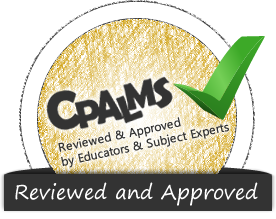General Information
Source and Access Information
Aligned Standards
This vetted resource aligns to concepts or skills in these benchmarks.Suggested Tutorials
Learn all about symbolism and allegory in this interactive tutorial. We'll use the classic short story "The Devil and Tom Walker" by Washington Irving to explore the use of symbolism and allegory as types of figurative language. We'll break down the events of the story and analyze how the use of symbolism contributes to the powerful allegory in this haunting tale. This tutorial is Part Two of a two-part series.
Make sure to complete Part One first. Click HERE to launch Part One.
Learn to identify and analyze extended metaphors using W.B. Yeats' poem, "The Stolen Child." In this interactive tutorial, we'll examine how Yeats uses figurative language to express the extended metaphor throughout this poem. We'll focus on his use of these seven types of imagery: visual, auditory, gustatory, olfactory, tactile, kinesthetic, and organic. Finally, we'll analyze how the poem's extended metaphor conveys a deeper meaning within the text.
![Cpalms [Logo]](/images/cpalms_color.png)







